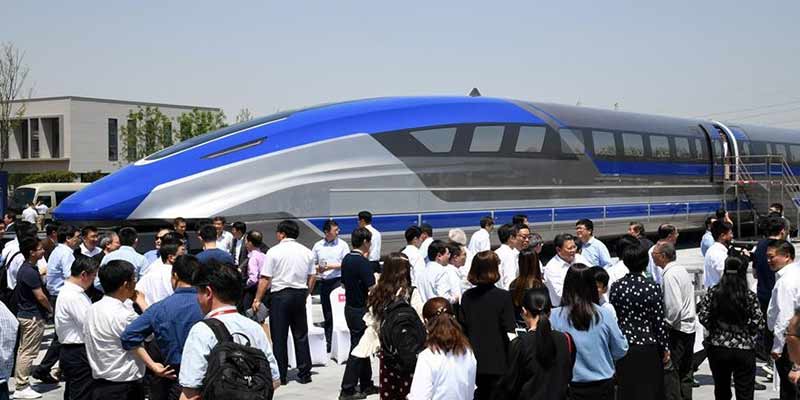- World
- May 24
China unveils 600 km/h maglev train
China has unveiled a prototype magnetic levitation (maglev) train with a designed maximum speed of 600 km/h, which its manufacturers say could pose a major competition to the airline industry. Chinese high-speed trains currently have a top operating speed of 350 km/h, while the cruising speed of commercial aircraft is about 900 km/h.
The train designed and made by the CRRC Qingdao Sifang Co, a wholly owned subsidiary of China, was unveiled on May 23 in the eastern port city of Qingdao in Shandong province, state-run China Daily reported. Once operationalised, it could pose a major competition to the airlines, its manufacturers said.
What is the principle behind maglev?
Maglev trains were conceptualised during the early 1900s by American professor and inventor Robert Goddard and French-born American engineer Emile Bachelet and have been in commercial use since 1984, with several operating at present and extensive networks proposed for the future. Maglev trains incorporate a basic fact about magnetic forces - like magnetic poles repel each other, and opposite magnetic poles attract each other - to lift, propel and guide a vehicle over a track.
Several train systems using maglev have been developed over the years, with most operating over relatively short distances. Between 1984 and 1995, the first commercial maglev train system was developed in the UK.
The world’s first commercial high-speed maglev line, capable of speeds reaching 430 km/h, was launched in Shanghai in 2002. It uses German technology, connecting a subway station to Shanghai Pudong International Airport.
Compared with standard bullet trains, the high-speed maglev trains have advantages including reduced noise and vibration, larger passenger capacity and lower maintenance costs, the report said.
New prototype to be operational soon
The new model can help check and optimise key technologies and core system components of the high-speed maglev system and lay a technological basis for an engineering prototype, said Ding Sansan, head of the train’s research and development team and deputy chief engineer of CRRC Qingdao. “The prototype has already achieved static levitation and is in ideal condition.”
“We are building an experimental centre and a trial production centre for high-speed maglev trains and expect to put them into operation in the second half of the year,” he added.
Experts have termed the debut of the prototype as a major breakthrough by China in the high-speed maglev trains. Feng Hao, a researcher at the National Development and Reform Commission’s Institute of Comprehensive Transportation, said the prototype indicates China is a step closer to production capacity in high-speed maglev engineering. A high-speed maglev running at 600 km/h could narrow the gap between high-speed rail and air travel, he said.
He added that for China, Japan will remain a strong rival in bullet train development and high-speed maglev train technology. A Japanese maglev train reached 603 km/h on an experimental track in Yamanashi prefecture in 2015, and Japan plans to put its 500 km/h maglev trains into operation by 2027.

